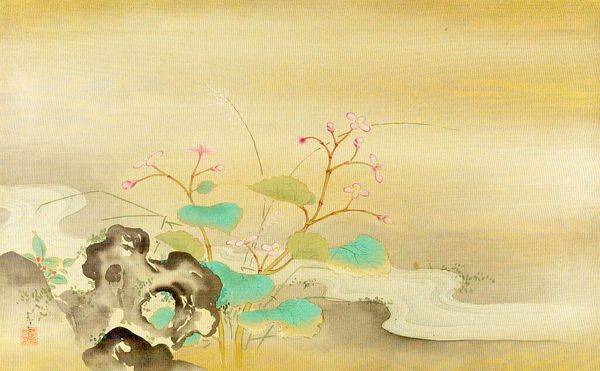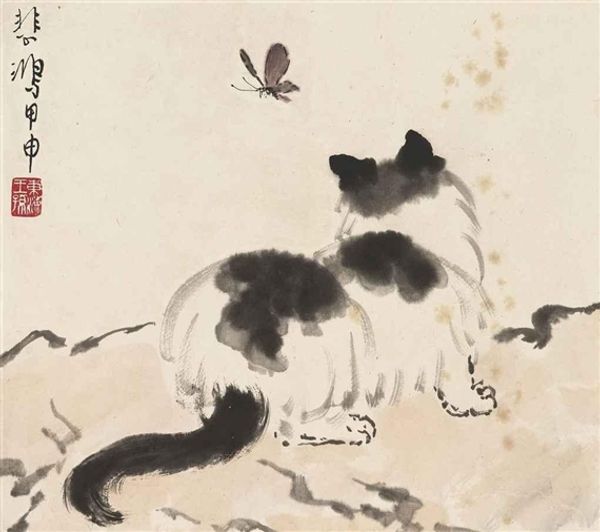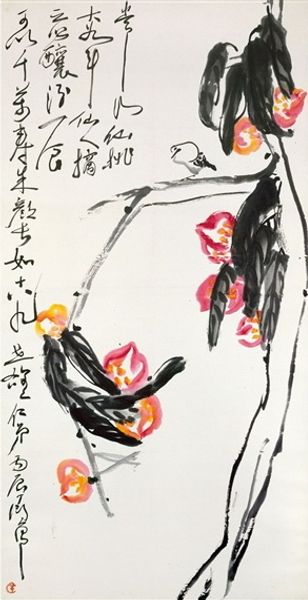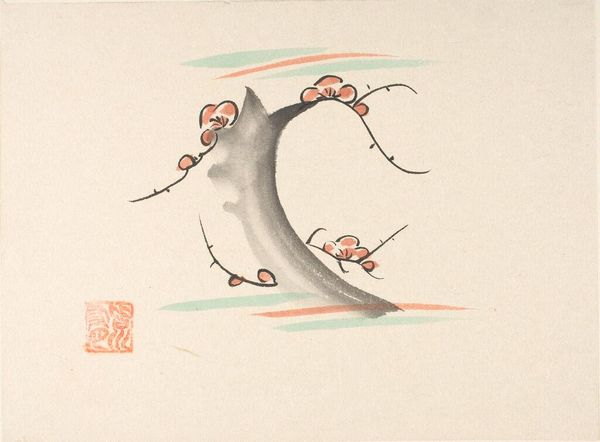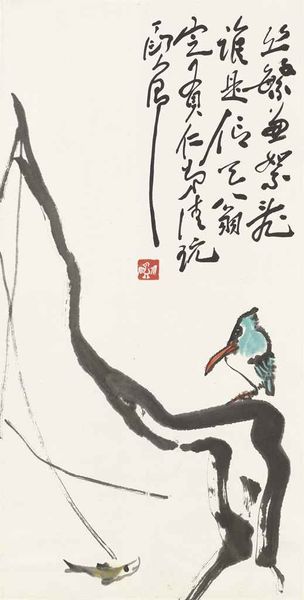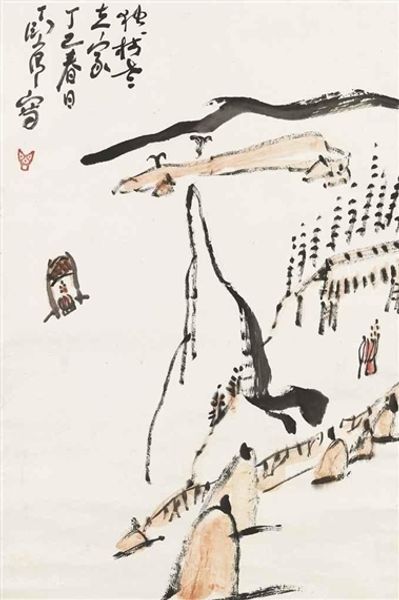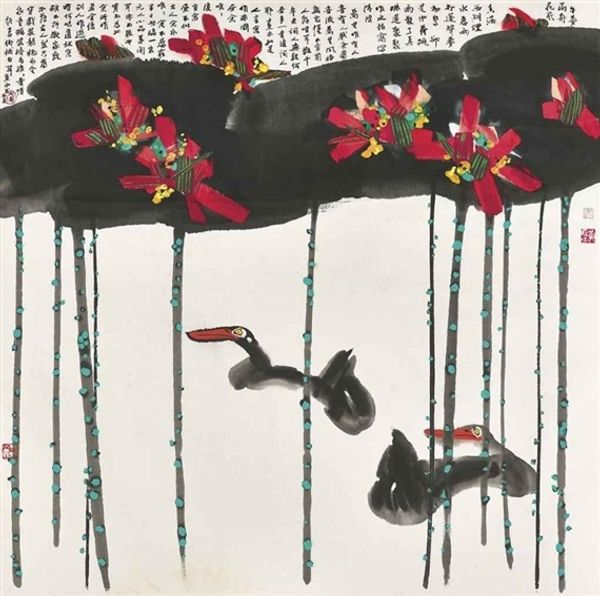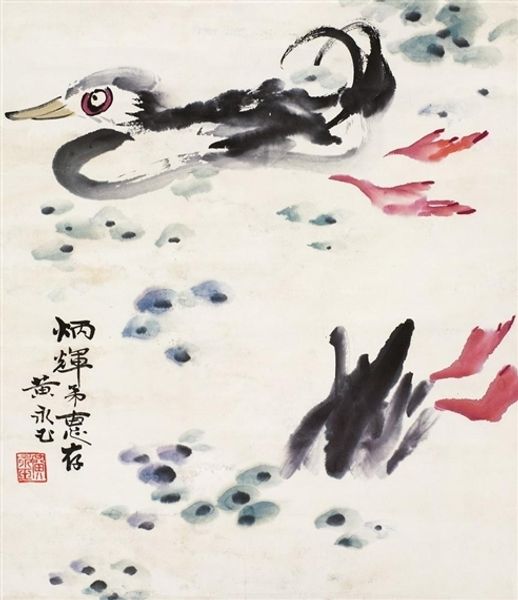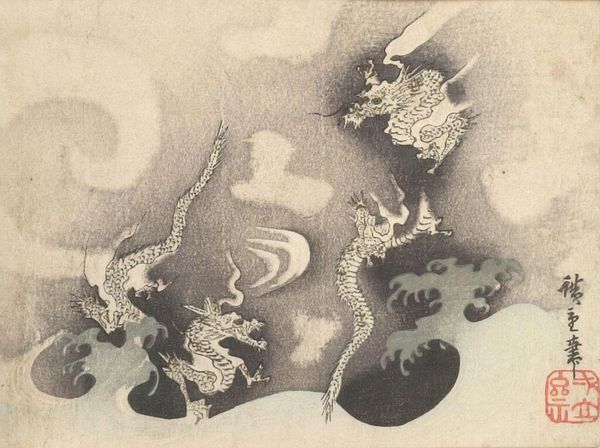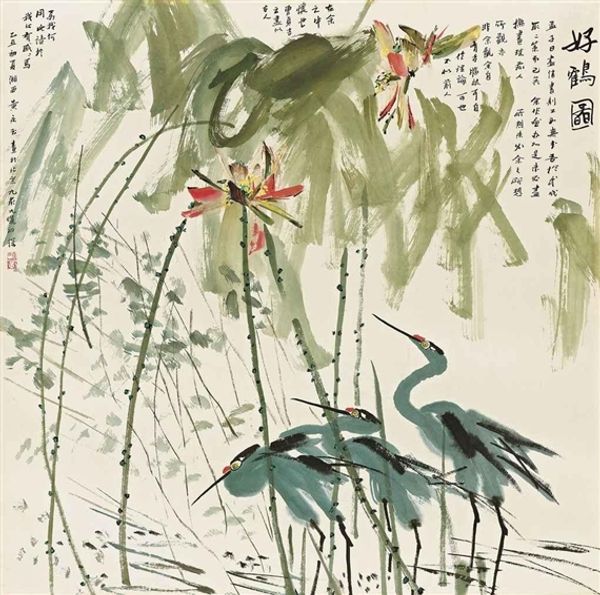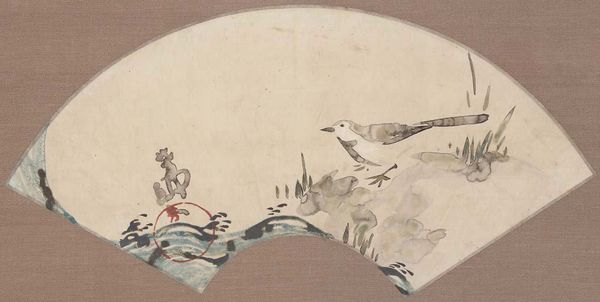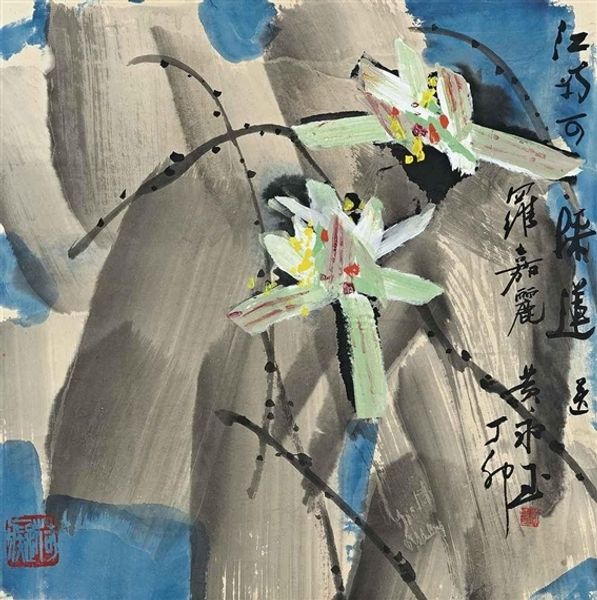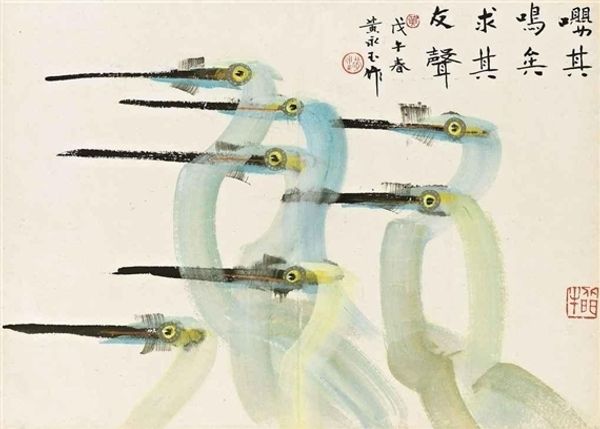
painting, watercolor
#
painting
#
asian-art
#
landscape
#
watercolor
#
abstraction
#
modernism
Copyright: Wu Guanzhong,Fair Use
Editor: Here we have Wu Guanzhong's watercolor painting "Aquatic Bliss." Its swirling forms and seemingly floating structures create an almost dreamlike feeling. I am particularly interested in the weight and density created with simple colors and medium. What’s your take on this work? Curator: Well, considering this piece through a materialist lens, let's first consider the obvious: Wu's chosen medium. Why watercolor? Its fluidity mirrors the aquatic subject, and the subtle gradations in tone suggest an emphasis on process itself, on how pigment interacts with paper. It's less about pictorial accuracy, and more about what can happen. The dark washes against the minimal paper space highlight material itself, labor, the contrast and relationship. Do you notice a connection between the natural forms and the manufactured, geometric lines? Editor: Absolutely. I see those bold, dark brushstrokes depicting architecture juxtaposed against the soft washes defining the landscape. Almost as if the relationship between man-made structure and nature isn't so clearly defined. Curator: Precisely. We also can see a post-cultural revolution discourse, challenging elitist assumptions. Is this ‘high’ art? By engaging a medium more connected with, and accessible to, the ‘masses,’ Wu seems to blur those assumed categories and boundaries. So we get not just art representing water but, water defining art and our place within it. Does this change your view, knowing these material contexts? Editor: Definitely. Understanding his medium in relation to historical context really challenges my own preconceptions of what art is, what art can be, and why artists choose specific processes. It helps shift the focus. Curator: And it makes us appreciate how labor and material are the cornerstones of cultural dialogues.
Comments
No comments
Be the first to comment and join the conversation on the ultimate creative platform.
